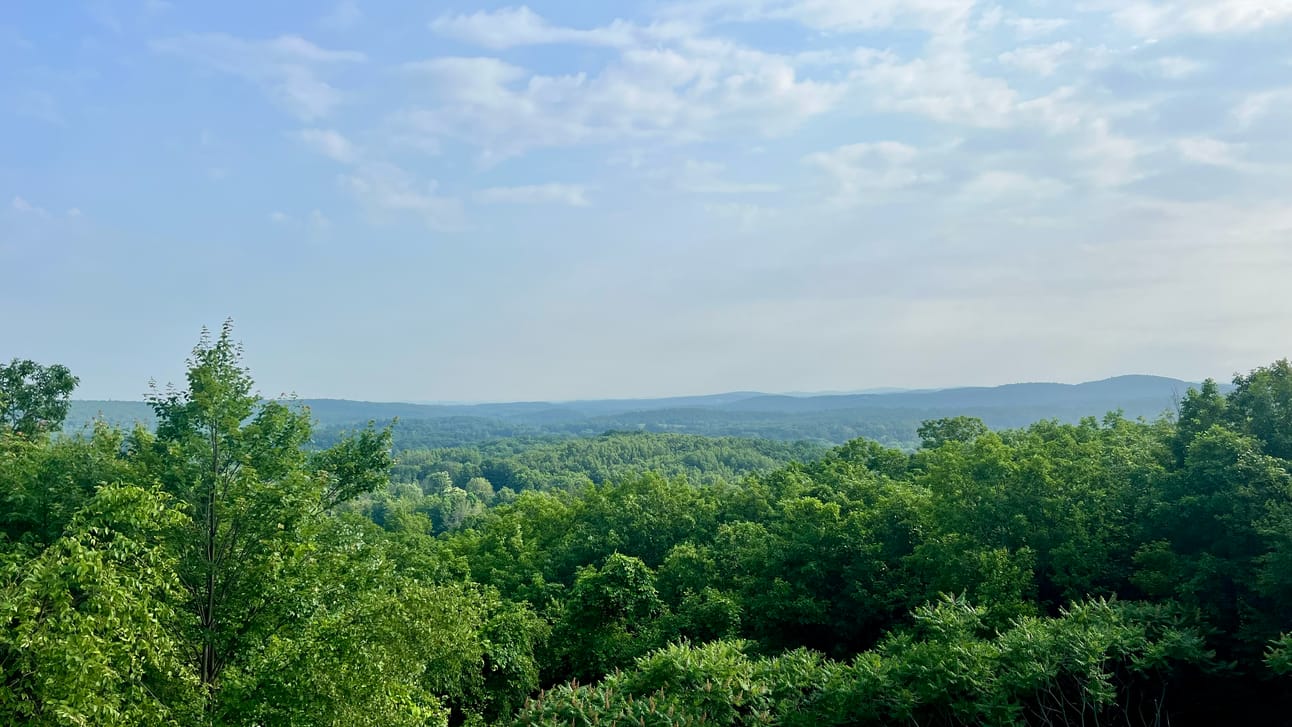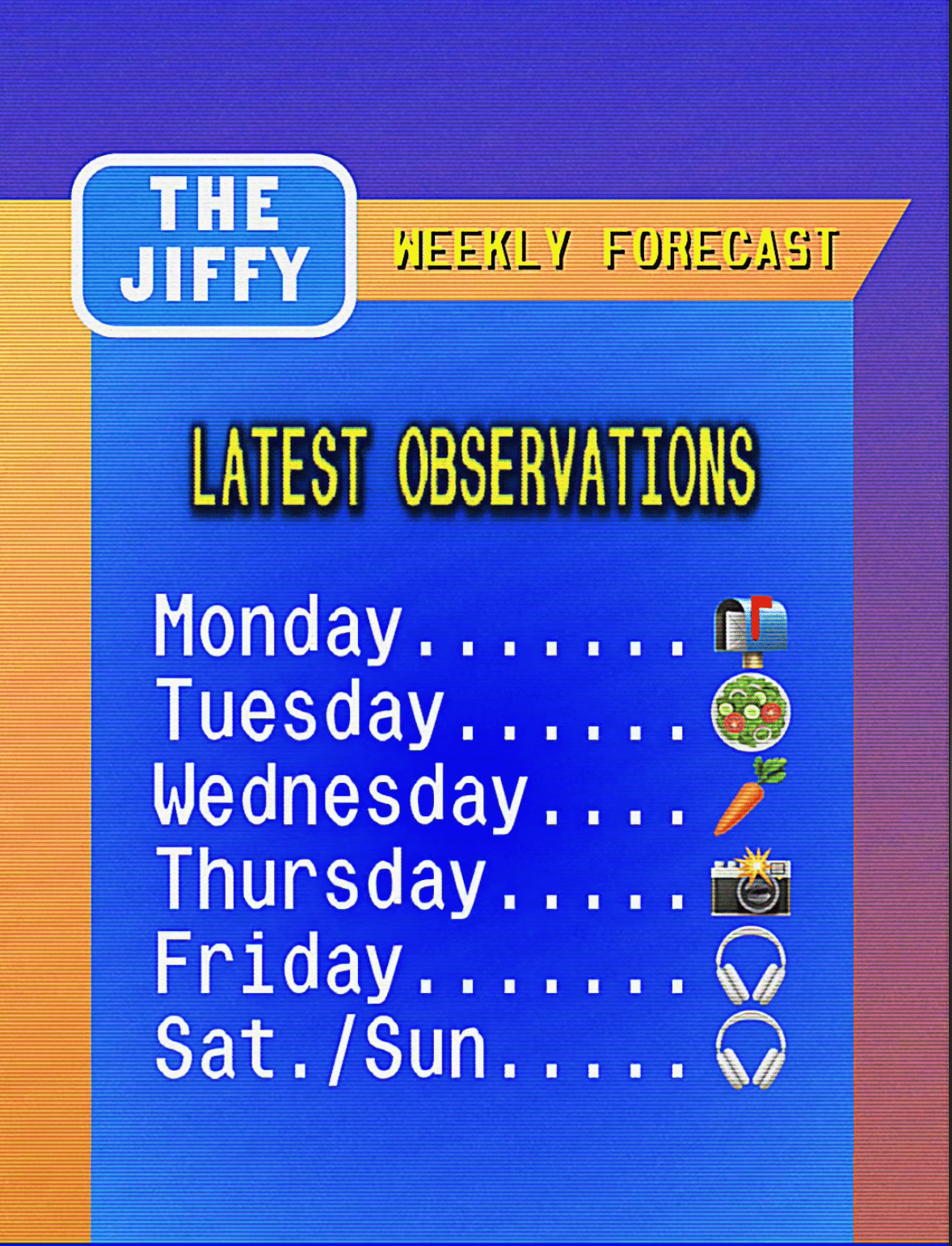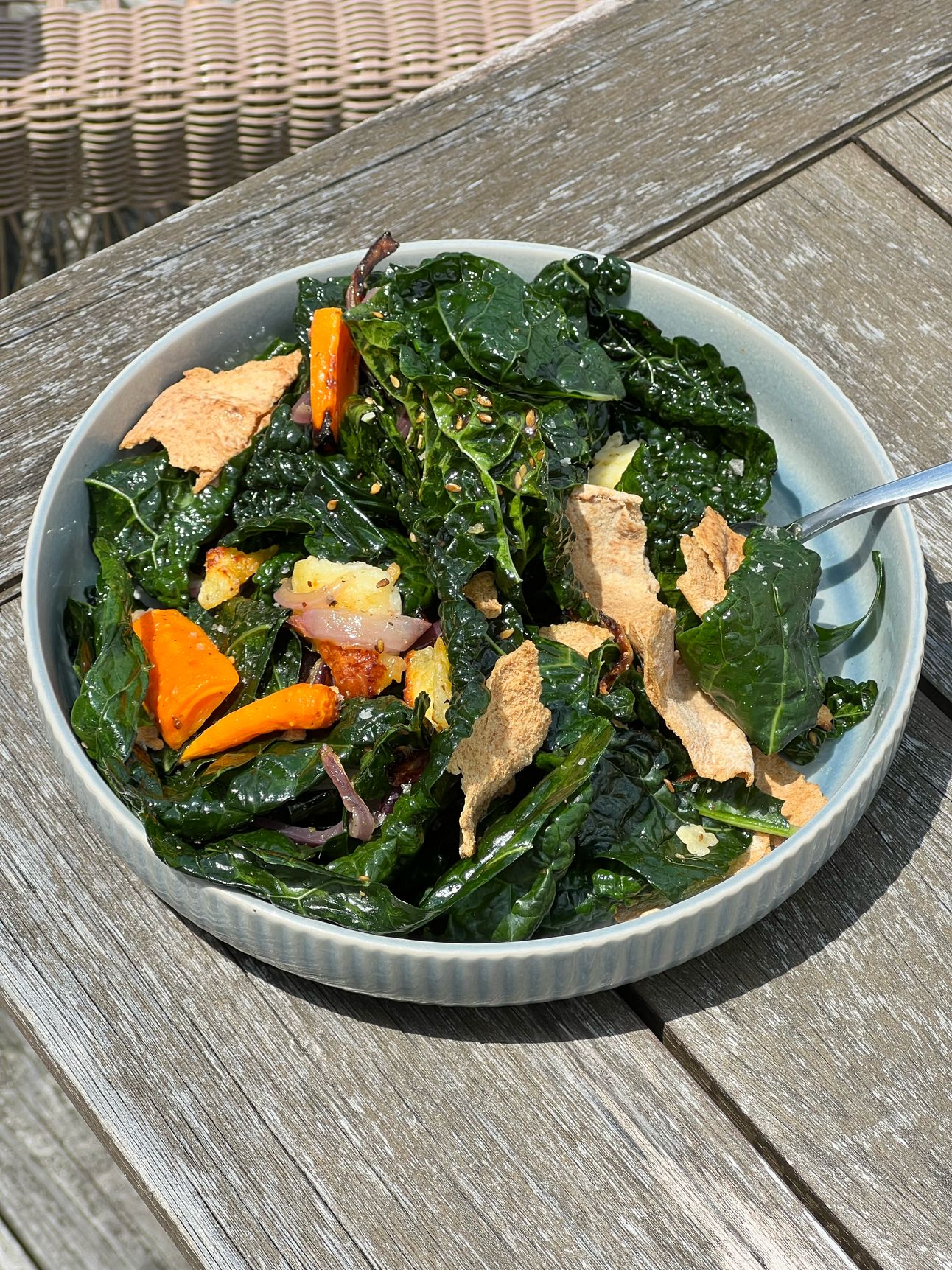
the view from July 23
THE J’EDIT
80 degrees at 8 a.m. – it’s hot 🫠
The National Weather Service has issued an Extreme Heat Warning for parts of upstate (including our county here), and my thoughts are with my friends at MX Morningstar farm down the road.
If you've been following along, you know it's already been a wet start to their CSA season, from unrelenting rains to spikes in hot, humid days, and they’ve been maneuvering and rotating and flexing their plans every week to stay on top of it all (while dealing with me sticking my camera in their faces and asking things like, “What is this bug???????”).
I’ve had the privilege of tagging along with the team since April for my series, “CSA: A Content Series on Agriculture,” and as the temperature climbs, I wanted to take a moment to look back on where we’ve been, and what’s coming next!
Thank you for being here,
James
CSA: A CONTENT SERIES ON AGRICULTURE
CSA, So Far
Back in March I messaged Maria Zordan, co-owner of MX Morningstar, a 30-acre vegetable farm in Claverack, with the idea to follow their Community Supported Agriculture (CSA) season from the first of spring through the seasons into early winter.
I’ve always been curious about how much planning, structure, adaptation, logic, and physical labor goes into producing CSAs every year; I couldn’t believe she said yes! The entire team at MX has been the most welcoming, fun, supportive, creative, and generous partners in sharing this series, and I’m learning a lot, such as:
Not only can jumping spiders recognize our faces, but they also have a surprising knack for decision-making. According to researchers at the University of Cincinnati, they can count up to four and even plan ahead, mapping out how to get from one point to another using something called “route detouring.”
Every seed-bearing plant begins life with a cotyledon, the first embryonic leaf (or leaves) tucked inside the seed. Sort of like its first, sometimes sacrificial leaves, cotyledons are part of every seed’s embryonic blueprint, formed before dormancy and activated during germination to deliver stored nutrients or kickstart photosynthesis, before fading out as the plant’s true leaves take over. We’d be nowhere without the cots !!
Enter the mysterious world of the spittlebugs, which drink the sap from trees and live in a protective spit-like foam made by their own urine! The New York Times: The sap isn’t very nutritious, so spittlebugs drink a lot of it: "Consequently, it excretes a lot of urine, about 150 to 280 times its body mass every day," which offers it protection from spiders, wasps, and other predators.
Coming this week, we’ll spend time with Sophie in the high tunnels as we pick the first radishes of the season, and The Hungry Eye will keep sharing his CSA Summer of Salads on Instagram.
Here are the episodes of the CSA series so far:
Episode 1: Meet The Team
Episode 2: What’s Up In The Greenhouse
Episode 3: It’s Steph & The Speedy Seeder
Episode 4: Crop Walking With The Best Of Them
Episode 5: Field Prep With Will
Culture Clarity Without the Clickbait
Lifelong learners deserve more than clickbait lists. 1440’s Society & Culture brief takes you beneath the buzzwords to reveal the forces shaping our shared experience—technological shifts, artistic movements, demographic trends. In about five minutes, gain a clear, evidence-based perspective that sparks conversation and fuels deeper exploration. No lofty jargon, no spin—just intellectually honest storytelling that turns curiosity into genuine understanding.
QUICK MESSAGE
One of my favorite parts of getting my CSA share every week is that it’s also accompanied by their great newsletter, written by Field Manager Steph Moran. It’s one of the best newsletters I receive, and as we hunker down for this heat wave, I wanted to include a short excerpt from this week’s issue. Steph teaches us how their crops cope with this heat:
Plants protect themselves from heat in a variety of ways: they close their stomata to reduce water loss, they pump water through their tissues like a swamp cooler, and they produce heat shock proteins which change the way plasmas and fluids travel through the plants’ circulatory systems. All of these processes take place in conjunction with normal metabolic changes that take place in response to solar warming throughout the day. All of these processes require water, which means that drought exacerbates the toll wielded by sustained heat. As a rule: swift changes in temperature are more problematic for plants than longer seasonal transitions.
Though I am NEVER looking forward to a day in the 90’s, I am excited to see a little long-awaited growth in some of our crops: potatoes, winter squash, sweet potatoes, and melons are all poised to accept higher temperatures, while I expect most leafy greens to meet a hasty demise.
WHAT’S NEW IN THE JIFFY-MART
The Perfect Tote For All Jiffy-Types Everywhere

If you’re looking for something handy to take with you, might I recommend the best companion to an early summer barbecue, trip to the lake, or just to look good in public: The Jiffy Type Tote, new in the Jiffy-Mart. No matter your type, this tote bag will match it. And your purchase directly supports the documentary storytelling I do here at the newsletter/Instagram feed/podcast.
Your content forecast for the week

Low-pressure content system taking shape
J’FAY SUPREME-ONLY 🔐
CSA Summer Of Salads

One of the many salads The Hungry Eye has seen
These past few CSA shares have been mighty green: Tuscan kale, snap peas, scallions, tatsoi, cilantro — and my favorite, frisee (and more!). But I haven’t been able to enjoy any of it because The Hungry Eye (anonymous food critic for The Jiffy) has taken all the greens and turned them into delicious salads for him to look at.
J’Fay Supreme Members get the (ever-growing) list of the recipes The Hungry Eye is using to make all the salads for his Summer Of Salads, at the link below. If you haven’t upgraded, you can join a tier HERE!
Did someone kind forward this to you?
Join "The Jiffy" to get stories like this delivered straight to your inbox every time! Subscribe here.




